This issue includes studies of Denali's moose, wolves, soundscapes, earthquakes, and more!
-
Denali National Park & Preserve
Article 1: An Ecological Overview of Denali National Park and Preserve
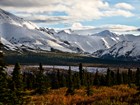
A quick overview of the natural history that formed what we know today as Denali National Park - and glimpses at changes that might happen in the near and distant future. Read more
-
Article 2: Air Quality Monitoring: An International Connection
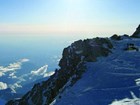
Denali is linked to the rest of the world through atmospheric pathways that carry industrial and agricultural contaminants, as well as smoke and dust, across the oceans from one continent to another. Two path-ways in particular carry airborne contami-nants to Denali, each with a characteristic seasonal pattern of transport. Read more
-
Denali National Park & Preserve
Article 3: Ecological Goldmine: The Denali Landcover Map and Denali Soil Inventory with Ecological Site Classification
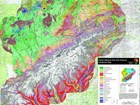
Comprising over 2,200 study sites, an exhaustive field study from 1997 - 2002 laid the (figurative and literal) groundwork for a comprehensive soil and vegetation map of Denali. Read more
-
Denali National Park & Preserve
Article 4: Origins of Soundscape Monitoring in Denali
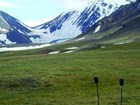
Soundscapes, the combined sounds from natural and non-natural sources, are recognized as an important resource in national parks. In the year 2000, park managers recognized that the natural soundscape of Denali was increasingly affected by non-natural sounds. Because preserving the natural soundscape also helps preserve the associated wilderness values and visitor experiences, a soundscape program was initiated. Read more
-
Article 5: Earthquake and Seismic Monitoring in Denali

Denali lies in the heart of earthquake country, and visitors may be treated to a ground shaking experience. Scientists, on the other hand, view the park as a natural laboratory for studying earthquakes and tectonics. One of the most interesting questions is to understand why the Kantishna cluster is more active than the other major features in the area, including the Denali fault. Read more
-
Denali National Park & Preserve
Article 6: Rutting Behavior of Moose

Weighing up to 1,600 pounds each, bull moose spar and sometimes brutally fight for a few weeks each autumn for the right to mate with females. Read more
-
Denali National Park & Preserve
Article 7: Tracking the Movement of Denali's Wolves

By tracking the movements of Denali’s wolves for 30 years, large contributions have been made to the study of wolves -- specifically those within the park boundaries. The park’s wolf population is more fluid and dynamic than had been expected, and wolf numbers vary two- or three-fold, depending on food supply; and years of study have shown that wolves demonstrate their intelligence and impressive physical abilities by occasionally doing something that you least expect. Read more
-
Denali National Park & Preserve
Article 8: Interrelationships of Denali's Large Mammal Community
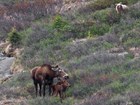
Denali is home to a daily life and death drama for many animals, though the 'big five' mammal species stand out in the minds of many visitors. In addition to the opportunities for viewing or photographing Interior Alaska’s large mammals, Denali is a great natural laboratory to study the species and their interrelationships. Unlike the rest of Interior Alaska, the Denali carnivore/ungulate community has been little affected by human harvests for several decades. Read more
-
Denali National Park & Preserve
Article 9: Bear Management in Denali
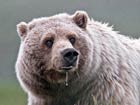
Since a peak of bear-human incidents in 1982, Denali's effective management of food and visitor education aims to keep bears safe from humans, and humans safe from bears. Read more
-
Denali National Park & Preserve
Article 10: Long-Term Golden Eagle Studies
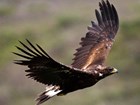
Alaska Park Science (2006) - Thanks to results of a long-term monitoring program for golden eagles ( Aquila chrysaetos), visitors frequently turn their eyes skyward in hopes of seeing one of North America’s largest aerial predators. With an abundance of cliffs and rock outcroppings for nest sites, as well as a diversity of prey, the northern foothills of the towering Alaska Range are well suited for this large aerial predator. Read more
-
Denali National Park & Preserve
Article 11: Integrated Monitoring of Physical Environment, Plant, and Bird Communities in Denali
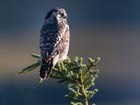
How can permafrost impact bird populations? Read more
-
Denali National Park & Preserve
Article 12: Medical Research Climbs Mount McKinley
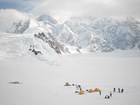
Four short case studies of medical research at the rooftop of North America -- high on the slopes of Denali. Read more
-
Denali National Park & Preserve
Article 13: Historic and Contemporary Ethnographic Landscapes of Denali National Park
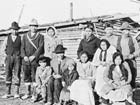
The land in and around Denali comprises part of the aboriginal homeland of five Northern Athabascan groups—Dena’ina, Koyukon, Lower Tanana, Upper Kuskokwim, and Western Ahtna. The affiliation of five Alaska Native groups with one national park is unique and illustrates the rich and diverse cultural heritage of the Denali area. Read more
-
Denali National Park & Preserve
Article 14: Scientific Legacy of Denali
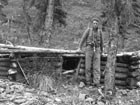
Denali's rich history as a place for science and research goes back over 100 years. Read more
-
Denali National Park & Preserve
Article 15: Sled Dogs and Science
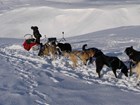
Sled dogs provide a perfect tool for researchers accessing wilderness areas during winter months. This approach helps to minimize use of helicopters and is more aesthetically compatible with the philosophy of wilderness than motorized vehicles. Read more
